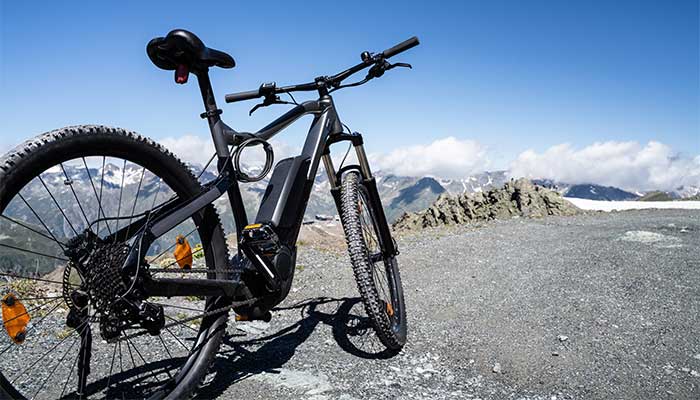- On the initiative of the Chairman of Banca Ifis, Ernesto Fürstenberg Fassio, the Park of Villa Fürstenberg in Mestre (Ve), the Group’s historical headquarters, is transformed into a permanent exhibition dedicated to contemporary art
- The collection, which will be enriched annually, features 12 works by major contemporary artists, including Botero, Mitoraj, Atchugarry, Fabre, Morris and Barni
- The project, inaugurated on the occasion of its 40th anniversary, strengthens the bank’s link with the territory in which it is historically rooted
- The new museum space will be open to the public free of charge from spring 2024 and will be twinned with the Biennale’s Italian Pavilion
Mestre, 28 September 2023 – Banca Ifis celebrates the 40th anniversary of its foundation by donating to the territory in which it is historically rooted a new space designed for the enjoyment of art and contemporary sculpture: the “Banca Ifis International Sculpture Park“, a permanent exhibition of monumental sculptures created at the behest of the Chairman of Banca Ifis, Ernesto Fürstenberg Fassio, and housed within the sixteenth-century Villa Fürstenberg in Mestre (Ve), today the Bank’s headquarters.
“We have decided to celebrate our 40th anniversary with an unprecedented initiative of strong cultural value, in favour of this territory to which we are deeply attached. The International Sculpture Park will be a constantly evolving place open to the public: an example of our way of doing banking with a social purpose, capable of combining the generation of profit with the creation of value for our communities. A synthesis, which has always been in our DNA, and which I will continue to pursue in the wake of a family tradition of solid values and long-term vision, with an eye on the future. At this special time, we renew our commitment to be a bank at the service of small and medium-sized enterprises and in support of our country’s economy” said Ernesto Fürstenberg Fassio, Chairman of Banca Ifis.
Curated by Giulia Abate and Cesare Biasini Selvaggi, and inaugurated in the presence of the Bank’s top management and representatives of the institutions – including Vittorio Sgarbi, Undersecretary for Culture, and Luca Zaia, Governor of Veneto – the Banca Ifis International Sculpture Park will be open to the public from spring 2024.
The Banca Ifis International Sculpture Park
The International Sculpture Park is housed within the more than 22 hectares of gardens of particular natural beauty and biodiversity surrounding Villa Fürstenberg, with its architecture reminiscent of the Palladian style. The exhibition space currently features twelve plastic works by ten Italian and international masters of contemporary sculpture: Fernando Botero, Annie Morris, Park Eun Sun, Igor Mitoraj, Manolo Valdés, Pablo Atchugarry, Pietro Consagra, Roberto Barni, Julio Larraz and Philip Colbert.
The exhibition route starts at the entrance to the Villa, where Igor Mitoraj’s large sculpture entitled “Cracked Theseus” (2011) has been placed and continues in the green areas of the monumental park, leading the visitor to a deep immersion in the constant dialogue between art and nature that is the very basis of the exhibition project. The International Sculpture Park is also intended to be an open-air workshop for the Biennale’s Italian Pavilion, which will see new sculptures added each year, including monuments, in order to continue to stimulate the dialogue between art and garden that characterises its essence.
The exhibition space is also accompanied by the volume “The Nature of Contemporary Sculpture – The Banca Ifis International Sculpture Park: stories, ideas and visions” with the history of the villa and the works, published by Skira and edited by Cesare Biasini Selvaggi and Giulia Abate. Through essays and a rich iconographic content, the volume reviews the role and importance of sculpture in contemporary artistic practices, its relationship with nature and territory, with the built environment and the public sphere. It starts with the contribution of Cesare Biasini Selvaggi who, through works in the Banca Ifis collection, highlights how heterogeneous the language of sculpture is, whether marble or any other material or medium is used to mould form. It then continues, amongst others, with Architettura, arte e Parchi di scultura, nuovi valori e prospettive (Architecture, art and Sculpture parks, new values and perspectives) from the Fosbury Group (curators Italian Pavilion Biennale Architecture), with Illuminare la scultura e i parchi d’arte (Illuminating sculpture and art parks) by architect Alberto Pasetti, with Fotografare la scultura (Photographing sculpture) by Andrea Garuti, which explains how photography, by its very nature devoted to drawing with light and working on depth of field, offers a further vision and plastic interpretation of the sculptural work, which goes beyond mere documentation. Corporate collecting and the role of art in Italian companies by Chiara Paolino of the Catholic University of the Sacred Heart in Milan then concludes the volume.
The works on display in the Banca Ifis International Sculpture Park
For this colossal face made of bronze in 2011, Igor Mitoraj draws on the classical world and the protagonists of Greek mythology to create a repertoire of figures with which to construct his own personal mythology, to be returned to the viewer as a union of fragments recomposed by the sculptor. The work thus imposes itself as a warning of the passage of time, of human frailty, but also as a symbol of the endurance of classical beauty and the values it represents.
Created in bronze by Igor Mitoraj in 1996 and 2000 respectively, they represent the metaphor of humanity that wants to challenge the very limits of nature, but also of those who are punished for their arrogance. The artist contrasts the classical canons of the reinterpreted myth (Ikaro), in which the squared-off “window” on the surviving wing seems almost to emphasise the existence of the link between past and present, and a new figure (Ikaria), with severed head and arms, small sculptures that look out from “niches” in a possible theatre of memory, the wings intact as if ready for flight, while a male hand holds her, encircling her right ankle.
In the 1999 work, Roberto Barni depicts two figures facing each other: anonymous men made eternal in bronze in situations of precarious balance, but protagonists of an aimless movement. A constant non-action, accomplices in a game of balances. Forced to the edge of the ladder in their city outfits, they resemble everyone and no one, and because of this, in addition to the fact that the works are concretely placed on the ground, without a pedestal, they create a direct relationship with the audience that passes through them as on a stage.
In 2017, artist Manolo Valdés created this work of brass and stainless steel, with the aim of teaching how to interpret the world and compose alternative hypotheses. Valdés wants to show how beauty is free, something that goes beyond mere aesthetic canons and represents an all-encompassing experience, so strong that it influences life choices and expectations.
Created in 2020 by Pablo Atchugarry, the work is based on the concept of lightness, which according to the artist is offered by the figures stopped in stone and which is translated into the weaving of draperies of volumes, of transitions between empty and full spaces, of back-lighting and of contrasts between transparencies and opacities. When sculpting his forms, Atchugarry uses a variety of stylistic strategies, bringing into play themes such as power relations, memory and knowledge.
For the artist Pietro Consagra, sculpture is an instrument of relational mediation intended for everyday life. This is the idea behind the object-sculptures such as Matacubo (1985), in painted iron. While in Sicily “matacubo” means something that is compact and bulky, for the artist it represents a shapely and seductive work that becomes a seat to be touched and experienced. The work in the park is a unique piece, the second of six.
Eun Sun Park moulds the harmony of nature and the rhythms of the human psyche in stone. Its typical nodular and corpuscular, atomic-cellular structures, such as the 2021 Continuation-Duplication in red and yellow granite, reveal its aspiration to rise towards the “light”. In the artist’s conception, in fact, parks and sculptures share the same nature: they reflect the imprints and fashions of the times in which they are created, but also the ideas and thoughts of their author.
- BRONZE STACK 9, VIRIDIAN GREY
Annie Morris’s work, created in 2022 in steel and varnished bronze, represents a journey between allegorical suggestions, past and present through different artistic languages. Depicting stacked coloured spheres, it alludes to the ordered structure of nature that coincides with the entire universe and interweaves multiple levels of storytelling, including personal ones (the British sculptor’s focus on spherical forms in fact dates back to her own pregnancy).
Philip Colbert’s work is presented as a contemporary cartoon protagonist of Surrealism. Created in 2022 in aluminium, bronze and steel, it represents a dialogue with art history on the one hand and contemporary digital culture on the other. This dualism characterises the entire research of the artist who, precisely because of the irreverence and irony with which he mixes different sources, from classical antiquity to the everyday symbols of mass culture, has been nicknamed “Andy Warhol’s godson”.
The work, created in bronze in 1992 by the recently deceased Fernando Botero, embodies the strength and majesty typical of the horse. With its swollen limbs and monumental dimensions, the animal recalls the baroque and satirical aesthetic universe and is sculpted with an affectionate reverence for its status as man’s timeless companion and friend.
Julio Larraz’s 2000 work, which is physically composed as an imposing coffee pot balanced precariously on a pile of wobbly crockery, embodies the great tradition of Spanish still life. With humour and originality, it suggests, in the author’s vision, the irony of Latin American political realities: an unequal balance of power and its ramifications, and the calculated strategies of man to reach places far beyond the reach of his own reality.
Art in Banca Ifis: inclusion and creativity for sustainable development
Commitment to art is nothing new for Banca Ifis. The inauguration of the International Sculpture Park – an international case history in corporate collection and cultural and social responsibility – is part of Kaleidos, the Bank’s Social Impact Lab, which promotes high social impact activities for people and communities, including in culture. These include the “Economy of Beauty” project, conceived by the Banca Ifis Research Department with the aim of giving voice to that cross-segment of the national entrepreneurial fabric that represents the excellence of Made in Italy and which this year has reached its third edition. Also part of Kaleidos is “Your Future You”, the 21 Gallery social economy teaching project that, through the methodology of life & executive coaching and artistic creativity, offers Italian high school students the opportunity to become aware of their potential through art. In addition, the Bank actively supports the Venice Biennale as the main sponsor of the Italian Pavilion, which, in its 2023 edition, brought together Italy’s leading architectural projects.





